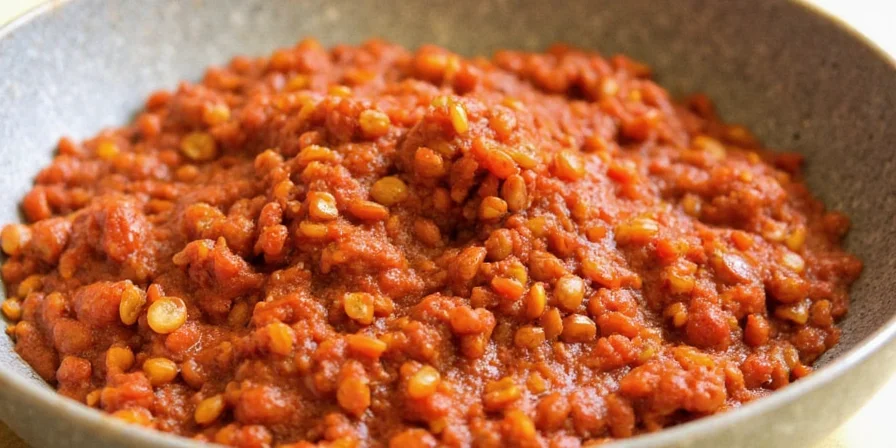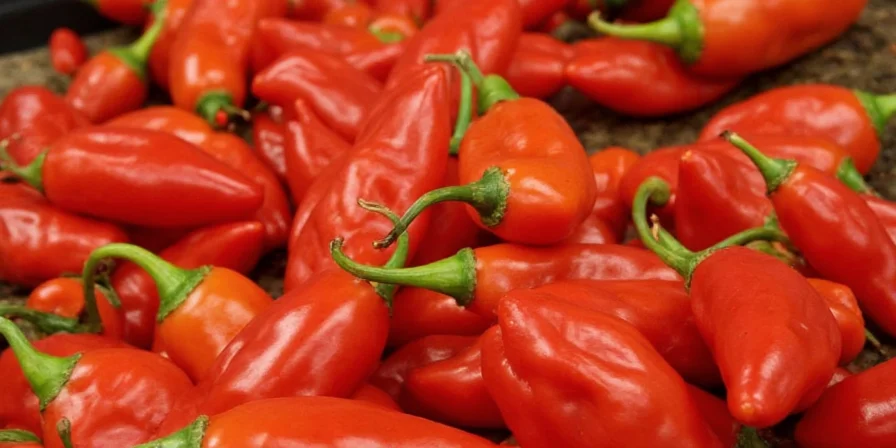Yes, chile ancho is mildly spicy at 1,000-2,000 Scoville Heat Units (SHU), making it significantly milder than a jalapeño but with complex flavor depth essential for authentic Mexican cuisine. This definitive guide delivers immediate clarity for home cooks wondering exactly how hot chile ancho is and how to use it properly in everyday cooking.
Table of Contents
- What Exactly Is a Chile Ancho?
- Spice Level: Precise Heat Measurement
- Flavor Profile: Beyond Simple Heat
- Cultural Significance in Mexican Cuisine
- Comparison to Other Common Chilies
- Professional Preparation Techniques
- Myths vs. Facts: Clearing Confusion
- Practical Applications for Home Cooking
- Frequently Asked Questions
What Exactly Is a Chile Ancho?

The chile ancho is the dried form of fully ripened poblano peppers. When green poblanos mature to deep red, they're roasted, peeled, and air-dried to become the distinctive heart-shaped chile ancho. This dehydration process concentrates flavors while reducing heat, creating a culinary staple with unique properties distinct from fresh poblanos.
As a cornerstone of traditional Mexican cooking, chile ancho provides essential depth in regional dishes like Oaxacan mole negro and Puebla's chiles en nogada. Its specific flavor chemistry cannot be replicated by fresh peppers, making it indispensable for authentic preparation.
Spice Level: Precise Heat Measurement

Chile ancho registers 1,000-2,000 Scoville Heat Units (SHU), placing it firmly in the mild category:
- Bell pepper: 0 SHU (no heat)
- Chile ancho: 1,000-2,000 SHU (gentle warmth)
- Jalapeño: 2,500-8,000 SHU (distinct heat)
Unlike hotter chilies, chile ancho delivers gradual, background warmth rather than immediate burn, making it ideal for family-friendly meals and complex sauces where heat shouldn't dominate other flavors.
Flavor Profile: Beyond Simple Heat

Chile ancho offers a multidimensional flavor profile that extends far beyond heat:
- Earthy notes similar to sun-dried tomatoes
- Subtle smokiness from traditional sun-drying methods
- Pronounced prune-like fruitiness
- Delicate cocoa undertones
- Noticeable raisin sweetness
This complex combination creates rich, balanced sauces without overwhelming other ingredients, explaining its critical role in authentic Mexican mole recipes.
Cultural Significance in Mexican Cuisine
Chile ancho's importance extends beyond mere heat measurement. In traditional Mexican cooking, it serves as a foundational flavor component rather than a heat source. Oaxacan mole recipes never use ancho alone—it forms the base that balances chocolate, spices, and other ingredients.
The drying process develops unique flavor compounds that fresh poblanos lack, which is why traditional mole poblano specifically requires chile ancho. This transformation represents both practical preservation and intentional flavor development, concentrating umami characteristics essential for authentic taste profiles.
Comparison to Other Common Chilies

| Chili | Heat Level (SHU) | Flavor Notes | Best For |
|---|---|---|---|
| Chile Ancho | 1,000-2,000 | Earthy, Smoky, Fruity, Sweet | Sauces, Mole, Stews |
| Jalapeño (Fresh) | 2,500-8,000 | Grassy, Fresh, Crisp | Tacos, Nachos, Salsas |
| Guajillo | 2,500-5,000 | Berries, Tea-like, Tangy | Dry Rubs, Salsas |
| Pasilla | 2,500-4,000 | Raisin, Tobacco, Earthy | Complex Sauces |
| Hatch Green Chile | Varies (Mild to Hot) | Grilled, Vegetal, Toasted | Enchiladas, Burritos |
Professional Preparation Techniques

Maximize flavor potential with these professional techniques:
- Controlled Toasting: Warm in 350°F (175°C) oven for 3 minutes to enhance aroma without burning
- Flavor-Infused Hydration: Soak in hot chicken broth instead of water for 25 minutes to add savory depth
- Precision Seed Management: Remove all seeds for completely mild dishes; retain 25% for subtle warmth
- Visual Presentation: Garnish finished dishes with rehydrated ancho strips for appealing presentation
- Long-Term Storage: Freeze whole dried anchos for 2 weeks before storage to eliminate pantry pests
Myths vs. Facts: Clearing Confusion

| Myth | Fact |
|---|---|
| Anchos are dangerously spicy | Mild heat level makes them accessible even for spice-sensitive individuals |
| All dried chilies are interchangeable | Each dried chili has unique chemical composition affecting final dish authenticity |
| Seeds should always be removed | Seeds add nuanced heat in traditional recipes; removal depends on desired outcome |
| They lose potency quickly | Properly stored, they maintain flavor for 12 months in airtight containers |
Practical Applications for Home Cooking

Chile ancho's culinary value lies in its balanced profile: mild enough for everyday family meals yet complex enough for special occasion dishes. Understanding its precise heat level (1,000-2,000 SHU) allows home cooks to use it confidently in various applications without unexpected spiciness. When properly prepared using traditional techniques like controlled toasting and broth-based hydration, chile ancho transforms ordinary ingredients into authentically flavored Mexican dishes. Its unique combination of gentle warmth and rich flavor complexity makes it an indispensable pantry staple for anyone seeking genuine Mexican cuisine.
Frequently Asked Questions
| Question | Answer |
|---|---|
| Is chile ancho the same as poblano? | Yes—chile ancho is the dried form of ripe poblano peppers. Fresh poblanos are green and milder; drying concentrates flavor and creates ancho's signature earthiness. |
| Can I substitute ancho with chipotle? | No—they're fundamentally different. Chipotle is smoked jalapeño (3,500-8,000 SHU) with intense smokiness. Use guajillo instead for similar mild heat and fruitiness. |
| Why do some recipes specify "toasted" ancho? | Toasting releases essential oils, intensifying smoky notes. Skip this step and you lose 30% of its flavor complexity—critical for authentic mole. |
| How to store unused soaked ancho? | Freeze rehydrated peppers in broth ice cubes for instant sauce bases. Lasts 3 months without flavor loss. |
| Does ancho lose nutrients when dried? | No—drying concentrates vitamin A and C. One ounce provides 140% daily vitamin A, supporting immune health. |











 浙公网安备
33010002000092号
浙公网安备
33010002000092号 浙B2-20120091-4
浙B2-20120091-4